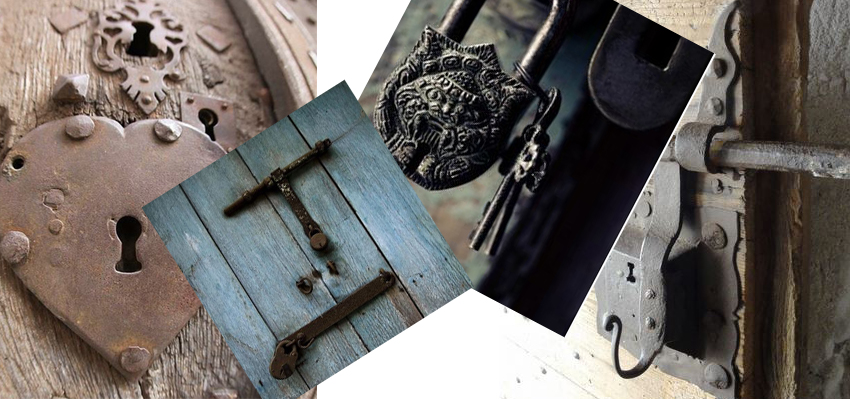We think of locks as a relatively new invention and in a way they are. The new innovations we have come up with has changed and improved locks so much that they are almost unrecognizable from their ancient counterpart. And yet, locks have exists in this world for approximately 4,00 years, maybe more. Let’s go through some highlights.
The oldest lock known to man so far was found near and ancient Assyrian city called Nineveh. Archeologists found it in the Khorsabad Palace ruins. This lock was a predecessor of the traditional pin tumbler lock we know today. It contained a wooden bolt that had several holes on top that were filled with wooden pegs.
Next were the Egyptians who created the pin tumbler lock. Because of this, they also created the first concept of keys. This type of lock is the parent to the ones used today in our doors. The Egyptian version of the lock contained several loose peg which we call pins today. The key is inserted and the pegs move, falling into the slots of the key. This causes the pins to align properly in order to unlock the door.
Ancient Greece favored knots as opposed to locks. They were known for using the Gordian Knot as a form of security. They would use this complicated knot to lock up their doors and soon a knotted rope became the symbol of security. This knot was supposedly created by the King of Phrygia, Gordius, who became king after he tied up his ox cart and the oracles proclaimed his title.
In the Orient, brass and iron padlocks were preferred. They were simple and portable. The bolt of the lock was held in place by springs. In order to release the bolt, a key would be inserted to compress the springs. Many of these locks were ornately decorated. They were often made in the shape of animals or engraved with characters.
During the Medieval Era, locks were not used as often. Instead, they used things called “living locks”, otherwise known as crocodiles. Anything valuable would be stored and sealed in a box. Then this box would either be submerged in water or placed on a small island. This was convenient since many of the property at the time had moats. The water contained hungry crocodiles to guard the valuables. These crocodiles were carefully fed so that they would always be hungry. Thus, it was impossible to steal from the water without getting attacked and eaten.
In the 14th and 15th century, there were little improvements in locks. Instead, the aesthetic of the locks can to the forefront. The outside design of the lock became increasingly ornate. Craftsmen would produce locks for cupboards and doors using detailed metalwork. Masters of this would create a “masterpiece” lock that was never used. Instead, it is often displayed so the world can look in and see its intricacies.
As locks became more complicated, the art of lock picking flourished, especially around the 18th century. In order to combat this, puzzle padlocks were created. This can be recognized as the forerunner to combination locks. The earliest examples of puzzle padlocks come from the Chinese. They would have 3 to 7 rings of characters that needed to be properly aligned in order to release the catch.
During Colonial times in America, the colonists preferred to use a type of locks called Latchstring Locks. These locks had to be locked from the inside. The bolt or wooden bar would be attached to a string and once the door was locked, the string would be threaded through a hole. This was a sign of hospitality for visitors. If the string was dangling, then they simply pulled and walked in.
In 1844, the Yale Lock was created by Linus Yale Sr. He used the Egyptian design on pin tumblers and improved it by adding more pins and changing their orientation. This lock is one of the most popular types still used today. As most doors need keys, they operate on the pin tumbler system.
One of the simplest locks we still use, the push button lock, was created in 1920s. Walter Schlage who created this won the “Modern Pioneer Award” for his basic yet innovative design. Essentially, you push the button in the center of the doorknob to lock the door and turn the knob from the inside in order to unlock it.
Locks are constantly evolving to make us more and more secure. Yet, while locks look different on the outside than they used to, the insides still hold similarities. Just as humans have evolved and improved over time, so have locks. While the idea of the pin and tumbler system is still the same, its actual utilization has become more complicated with increasing number of pins. The same goes for combination locks.
It will be quite interesting to see where technology takes us next? Will we continue improving on our old methods or will something new come along? At the very least we no longer have to worry about getting eaten by a crocodile, right?

